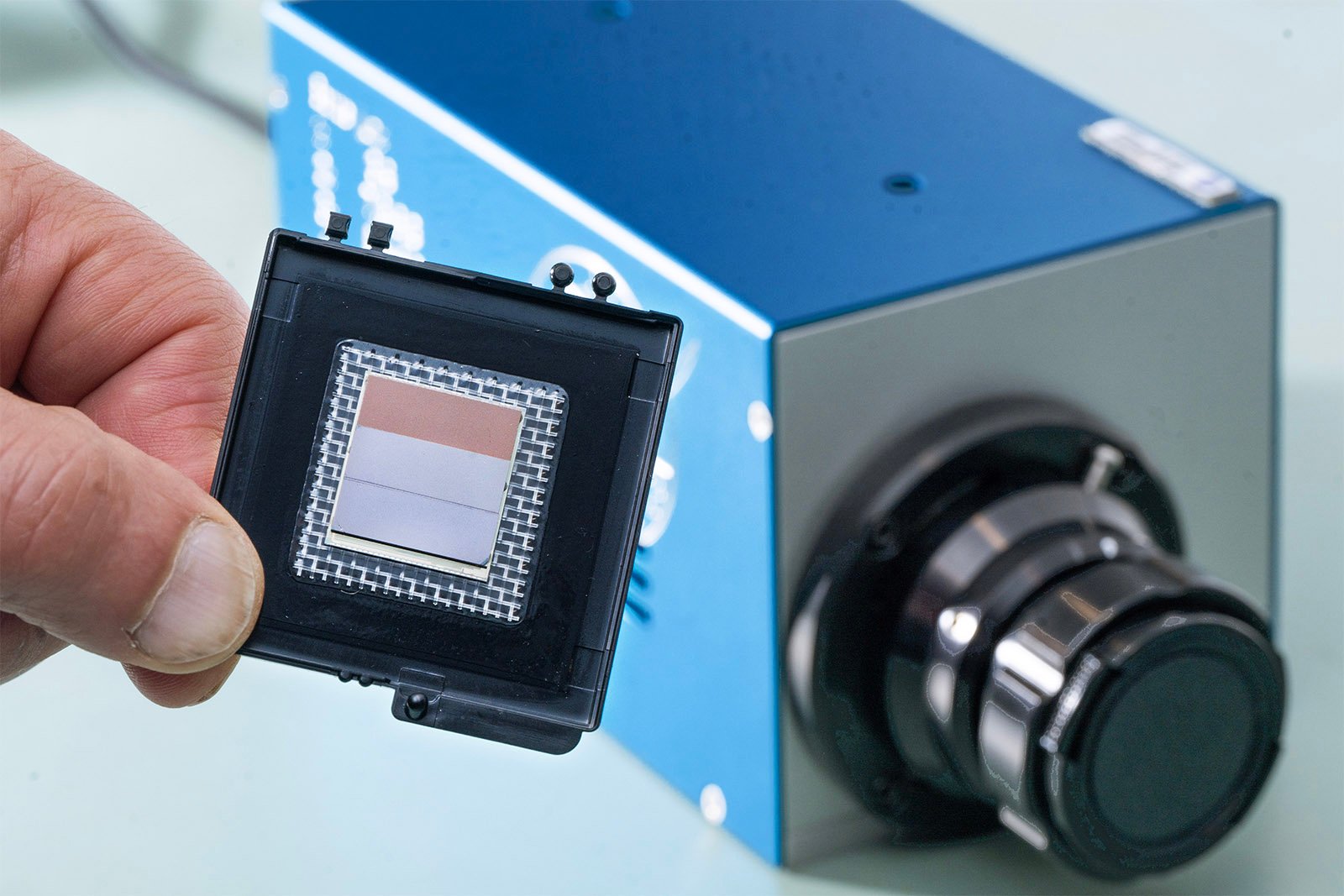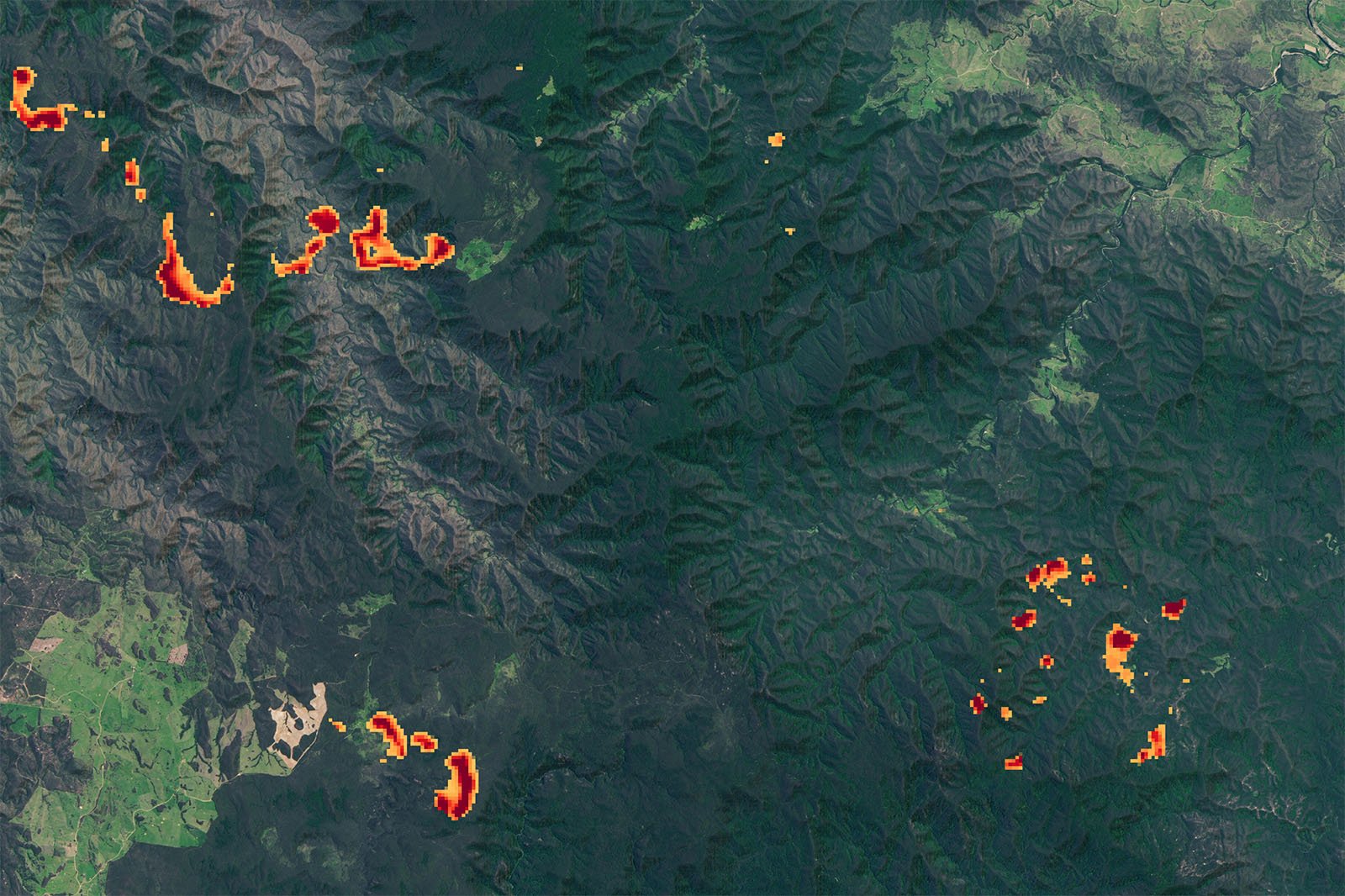![]()
NASA has unveiled a new infrared camera that promises to drive impressive new science on Earth and beyond.
The new higher-resolution infrared camera will be able to perform diverse tasks like improving forest fire warnings and revealing the molecular composition of exoplanets. This versatility results from a variety of lightweight filters that change the wavelengths of light the camera can detect. However, unlike a typical filter system, which augments the optics, the NASA Compact Thermal Imager features filters at the sensor side.
“Attaching filters directly to the detector eliminates the substantial mass of traditional lens and filter systems,” says engineer Tilak Hewagama. “This allows a low-mass instrument with a compact focal plane which can now be chilled for infrared detection using smaller, more efficient coolers. Smaller satellites and missions can benefit from their resolution and accuracy.”

Engineer Murzy Jhabvala led the early stages of the new sensor’s development at NASA’s Goddard Space Flight Center in Maryland and continues work on the current filter integration efforts. Jhabvala also led the Compact Thermal Imager experiment on the International Space Station, demonstrating the new sensor’s ability to perform and survive in space. The imager captured more than 15 million images, and the experiment’s rousing success earned Jhabvala, Don Jennings, and Compton Tucker an agency Invention of the Year award in 2021.
During the test, the camera delivered significant data about wildfires, new information about the structure of clouds and the atmosphere, and much more. The infrared sensors, which interact with individual photons at a remarkable wavelength resolution, delivered more than five times greater resolution than older infrared cameras.
NASA describes the Compact Thermal Imager as a hyper-sensitive image sensor with a “strained-layer superlattice” structure. In a separate report on the sensor, NASA explains:
Strained Layer Superlattice (SLS) detectors are a new class of detectors which may be the next generation of band-gap engineered, large format infrared detector arrays with substantially higher quantum efficiencies than existing quantum well infrared photodetectors (QWIPs) and provide a competitive alternative to the current state-of-the-art mercury cadmium telluride and QWIP detector arrays. The anticipated advantages of SLS detector technology over existing IR detectors are: high sensitivity, band-gap tunable wavelength response (similar to QWIPs), warmer operating temperatures, array spectral uniformity (yet to be realized), high temporal stability, relatively low cost of manufacturing, scalability (to very large format arrays) and multiple vendor sources all contributing to higher performing scientific instruments.
The benefits of this sort of resolution are significant on Earth. Looking at the forest fire scenario, they are becoming more frequent, violent, and deadly. The Compact Thermal Imager’s ability to detect and analyze forest fires with greater accuracy is not only beneficial in the moment, but the improved data helps predictive models so people can more accurately predict how a fire will evolve and move over its life.

This same resolution and ability to precisely determine the molecular makeup of gases also makes the Compact Thermal Imager intriguing from a space science perspective.
“That technology could also benefit missions to rocky planets, comets, and asteroids, planetary scientist Carrie Anderson said. She said they could identify ice and volatile compounds emitted in enormous plumes from Saturn’s moon Enceladus,” says NASA.
“They are essentially geysers of ice,” Anderson explains, “which of course are cold, but emit light within the new infrared sensor’s detection limits. Looking at the plumes against the backdrop of the Sun would allow us to identify their composition and vertical distribution very clearly.”
As demonstrated by infrared detectors on space telescopes like Webb, scientists can learn an incredible amount about a cosmic object by studying wavelengths of light. Molecules have distinct signatures across the electromagnetic spectrum, and the same camera technology that may save lives and property from fires on Earth could help identify whether an exoplanet could support life.
Image credits: Photos and captions courtesy of NASA
